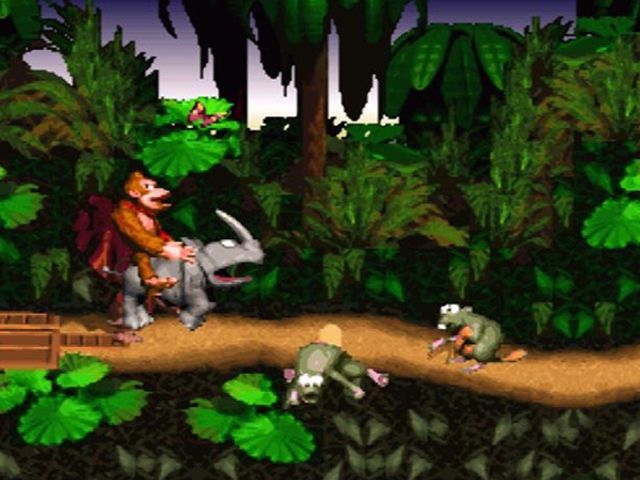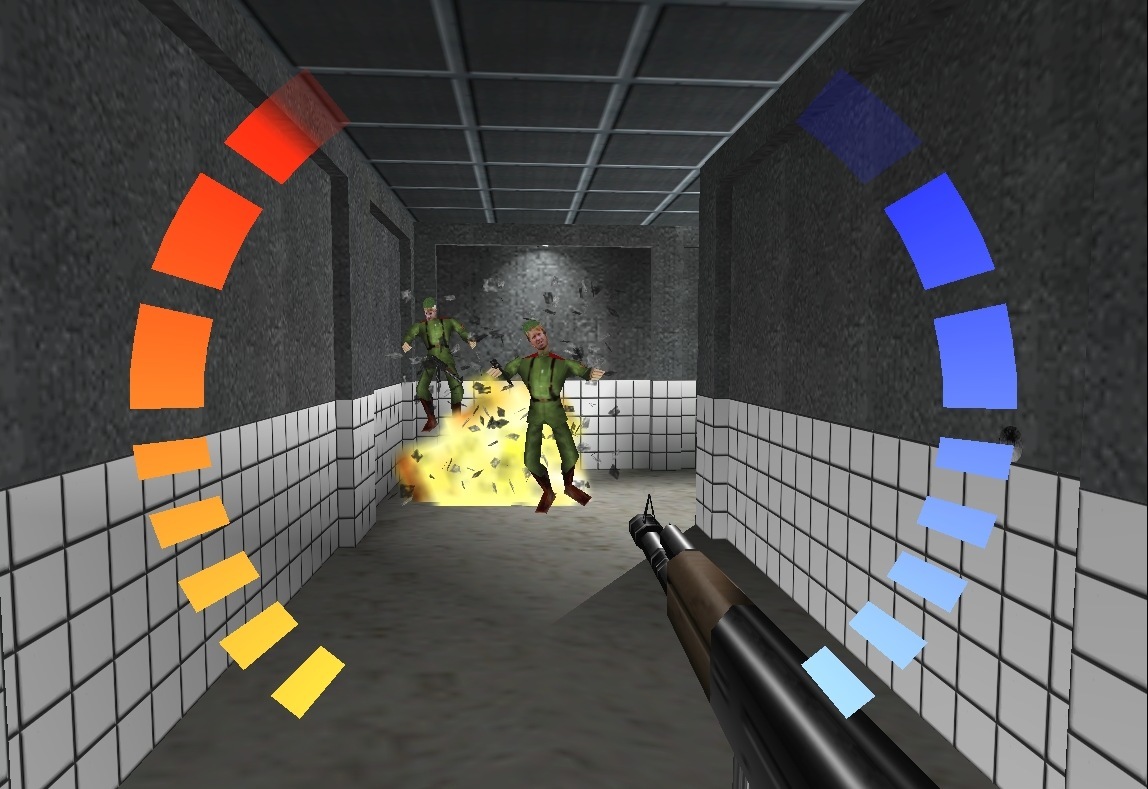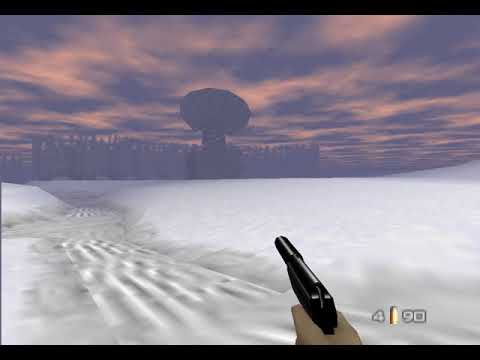The Nintendo 64 was plagued by the lack of quantity of AAA game releases (as 3rd parties flocked to Sony’s greener pastures in the mid 1990s). However, the few big titles that did grace the system were some of the most revolutionary, and amazing games ever made. One such game was Rare’s Golden Eye.
Rare was Just As in Important as Nintendo EAD in the Nintendo 64 Era

Established in 1985 by the Stamper brothers, Rare earned its way to Nintendo good graces by reverse engineering the Famicom (NES). Nintendo, at the time, believed that its console was impossible to reverse engineer.
Thus, when Rare showed up at their doorstep with a few impressive tech demos (proving Nintendo wrong), Nintendo had no choice but to grant them an “unlimited amount” of budget to create games for the machine, which Rare would swiftly proceed to make.
The company would go on to develop over 60 titles for NES. These titles were all published under different publishing houses. Publishers such as Sega, Electronic Arts, and Acclaim all worked with Rare on different IPs, but perhaps Rare’s most well-known creation at the time was the Beat ’em Up ‘Battletoads’.
Rare’s philosophy on game making would change during the SNES era. During this period the company invested heavily on Silicon Graphic workstations, and consequently, became one of the most technically advanced developers in the world.
Rare’s impressive show of tech muscle (and impressive SNES tech demos) would propel Nintendo to buy 49% of stake in the company thus turning Rare into a 2nd party developer for the Japanese giant.
Nintendo would allow Rare to utilize the Donkey Kong IP, and Rare would craft Donkey Kong Country for a 1994 release.
Selling over 9 million units, Rare’s masterpiece became the systems 3rd best selling game at the time. Its sequels Donkey King 2 & 3 would go on to sell nearly 9 million units combined.
Rare’s 1995 fighting game, Killer Instinct, would sell 3.5 million units itself. By selling more than 20 million units of games launched between 1994-1996 Rare stamped itself as a powerhouse in the game development industry.
The Golden Child
Four out of the top ten best selling Nintendo 64 games belong to Rare, the other five are Nintendo developed games. Clearly, Rare’s N64 titles were a huge reason behind Nintendo’s ability to move nearly 33 million N64 units from 1996-2001.
While the Nintendo 64 had a record breaking sales start thanks to the revolutionary Super Mario 64. The demand for the system would slow down in 1997, as cartridge games were expensive to make for developers, and expensive to buy for costumers. Consequently, AAA game releases were far and few in between for N64 owners.
Basically, apart from the aforementioned Super Mario 64, Turok, and Star Fox 64, there wasn’t much else to play, and the system sorely needed another industry defining hit by mid 1997.
Rare answered the call with the release of Golden Eye 007 on August 25, 1997. Golden Eye was based on the earlier James Bond film that shared same name.
Despite Some Early Issues During Development, Golden Eye 007 Couldn’t Have Turned Out Better

In the ultimate proof that ‘Quantity’, not ‘Quality’ was Nintendo’s biggest issue in its inability to outsell Sony’s PS1 during the mid to late 90s, the Nintendo 64 was home to the ‘Game of the Year’ (D.I.C.E.) winner for three straight years (1996, 1997 and 1998) before its streak was broken by the Sims (which was a PC game) in 1999.
Golden Eye was 1997’s recipient of the award. Considering that it went up against Square’s Final Fantasy VII for said prize, Golden Eye had to be a very special game in order to have earned such a distinction.
To put it bluntly, just like Mario 64 before it, Golden Eye 007 showcased a game on a tech level (3-D rendering) that was beyond anything that was possible on the Sega Saturn and the PlayStation 1 at the time.
Clean, realistic, and sharp looking 3-D visuals made Golden Eye 007 the most realistic looking game on consoles at the time. A few months earlier, Acclaim’s Turok had shown that the N64 was capable of running incredible first person shooting experiences, but Golden Eye took the genre to a whole new level.
At the time, I was blown away by the sheer amount of content in Golden Eye’s levels. Depending on the level of difficulty in which the game was played new and tougher objectives would appear for players to accomplish. Golden Eye’s use of objectives in levels differentiated it from other FPS of the time.
Unlike Doom, you weren’t simply going through corridors shooting enemies. Every level in Golden Eye contained different sets of objectives which needed to be accomplished in order to successfully complete the missions.
It was mind-blowing way to play first person shooters to say the least, but perhaps it was Rare’s attention to detail that really set Golden Eye apart in 1997.
An Unparalleled Visual Experience

Final Fantasy VII and Resident Evil had been visually impressive, but they weren’t Golden Eye impressive. While Final Fantasy VII delivered gritty realistic visuals, it was all done through pre-rendered static backgrounds. In this way, FFVII was the same as Resident Evil. Neither was a true full 3-D game.
Golden Eye however, offered a level of realism and grittiness in its visuals that had not yet been seen in a full a 3-D game at the time of its release. Enemies could be shot on different body parts causing the proper (scripted) mo-cap reaction.
While ‘in-game’ physics have come a long way since the N64 days, the detailed reactions by the enemies when shot remain enjoyable (and at times more realistic than ‘rag doll’ physics) to this day.
Though Golden Eye was rated ‘T’ for teenage audiences in the US, the game does feature spots of blood where enemies are shot, which in a way was more realistic than some of the more extreme “M” rated games of the era which had unrealistic amounts of blood splattering everywhere when you shot an enemy.
Environmental assets such as glass, computers, and tables could be destroyed by way firearm shots, and explosive devices.
Golden Eye 007 might have been the first game to have ever allowed for the ‘proper use’ of zoomable sniper scope. You could zoom in an out from across vast distances to place precise head shots on enemy soldiers.
The Sniper scope allowed me to better appreciate the draw distance in the game, which was impressive to say the least. Nintendo 64 games had a reputation for their over use of ‘fog’ in order to conceal ‘pop-up’.
While pop-up remains an issue on many PS4, and Xbox One games today, it was a bigger problem on the more primitive hardware utilized in the mid 90s.
Turok, which was perhaps Golden Eye’s biggest competitor at the time of its release, overused the fog effect to conceal the distance at which its world (and enemies) would be rendered at (which was extremely close to the player’s camera). Rare, however, would once again show their mastery of Nintendo’s hardware by pairing back the effect considerably and allowing for a great and more expansive view of distant objects on the screen.
Golden Eye would also properly capture the feel of the film’s locales. From clean, gray looking research facilities, to snow filled fields adorned by huge satellite dishes, to humid tropical jungle environments, Rare rendered every environment with a great amount of care and attention to detail.
Golden Eye in 1997, had a good claim for being the best looking console game around, and it definitely bolstered the amazing experience of playing through the game in single player mode.
However, Golden Eye’s major legacy defining feature within the FPS genre would not come in the form of its spectacular single player campaign…
Four Player Split Screen Death Match

It is impossible to talk about Golden Eye without mentioning its (at the time) ground braking Multiplayer four player split screen mode. It is hard to find a more iconic game from the time period that occupied the time of college students in college dorms, and that matched the joy of inviting a few friends (or family members) to play a few hours (that could turn into quite a few hours) of violently fun death matches than Golden Eye 007.
If Mario 64 justified the N64’s massive advantage in horsepower of its competition, then Golden Eye more than justified the 4 controller port design of the console. In other words, Golden Eye was the most powerful reason to own an N64 if you weren’t into Mario 64, or other Nintendo properties such as Star Fox and Mario Kart.
Apart from Ocarina of Time, and Super Mario 64 (and maybe FFVII) I don’t know that I spent more hours on a game back in the 32-64 bit era than I did playing Golden Eye. Most of those hours were spent playing death matches.
Even though I wasn’t the greatest player, scoring a victory here and there proved to be immensely satisfying and it served as a precursor to the eventual online death matches that would become hugely popular on consoles almost decade after Golden Eye’s release.
One thing that must be noted is that playing through this mode today really highlights how far we have come as the game drops to single digit frame rates often during the death matches. Ignorance is bliss, and back in 1997-2000 we didn’t really care much for the game’s slow down.
Golden Eye offered a death match mode that was unparelled at the time of its release and that was enough to earn it all sort of critical accolades and commercial success.
Golden Eye 007 was Once of the Nintendo 64’s Bigger Hits
With 8 million units sold, Golden Eye 007 ranks as the 3rd best selling game on Nintendo’s 64-bit system. About 1/4 of N64 owners had the game. With a 96 Metacritic rating, only The Legend of Zelda: Ocarina of Time, and Golden Eye’s spiritual sequel rated higher for critics on the console.
Golden Eye also helped to shed some of the ‘kiddie’ image that Nintendo seemed to have had a hard time shaking off thanks to its storied and successful ‘more colorful’ properties like Mario, and Star Fox.
For me, the original Halo in 2001 is probably the greatest First Person Shooter that I have played at the time of release, but Golden Eye 007 will always be a close second. My 12-13 year old self was mind blown by the game in 1997, and I still find some joy in playing its single player missions today.
The game is an easy find on Amazon and it retails for a decent price point of $30. For some reason Amazon has allowed fake carts (that work but are not the real carts) to be sold in its store. Make sure you study the seller, and its customer comments before committing any substantial amount of money to one of these old N64 carts.
Agree with the author? Couldn’t disagree more and are frothing at the mouth to tell him? Leave a comment here, on Facebook or send an email and make sure to follow Never Ending Realm on Facebook, Twitter, and YouTube!
